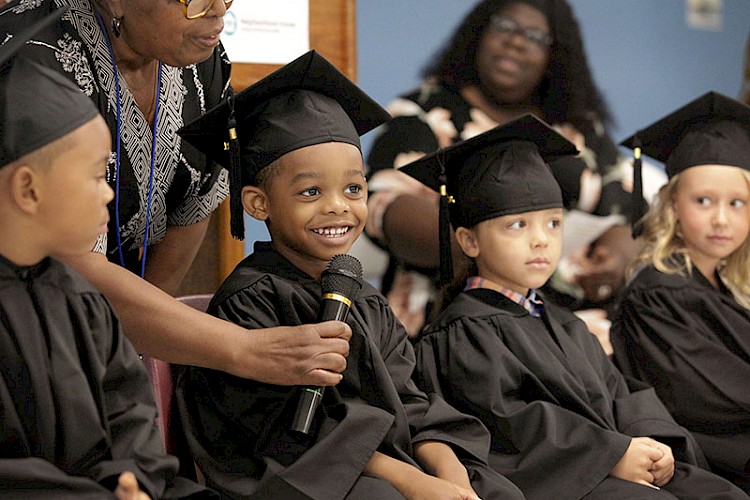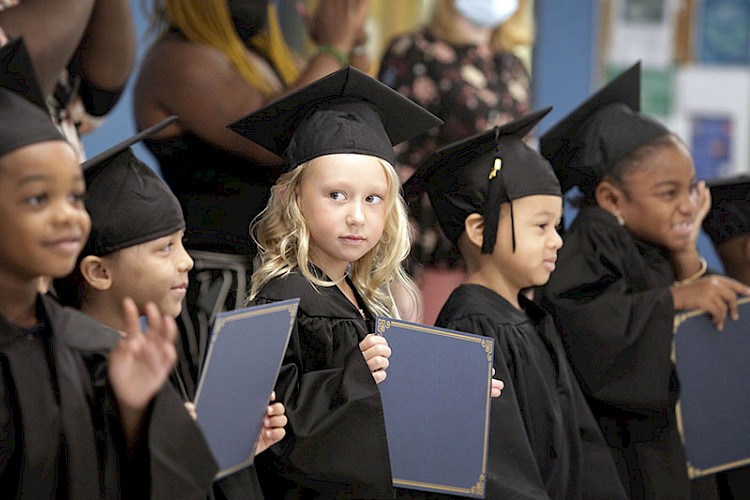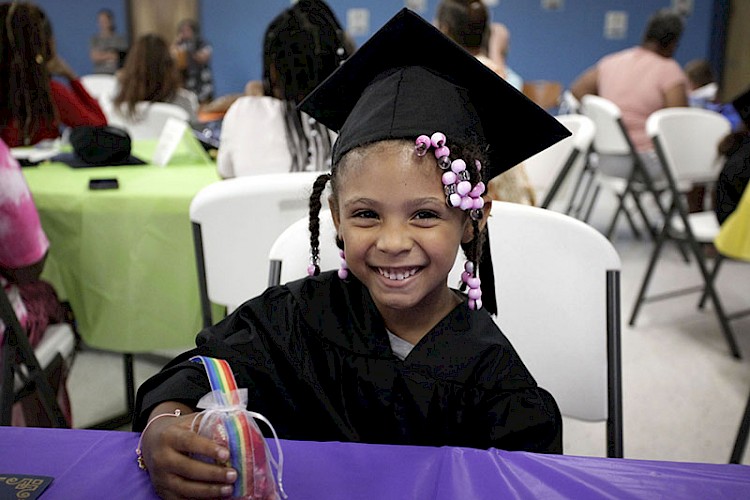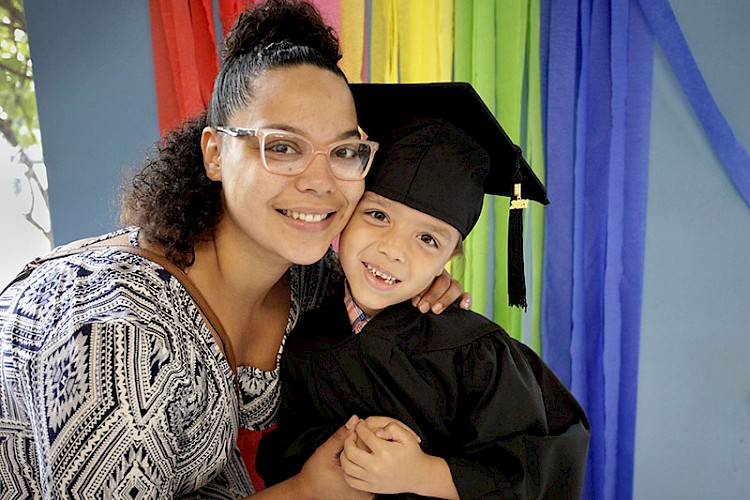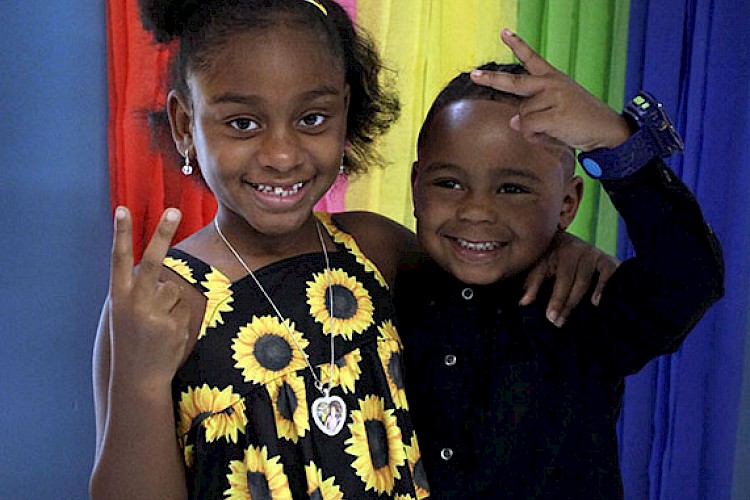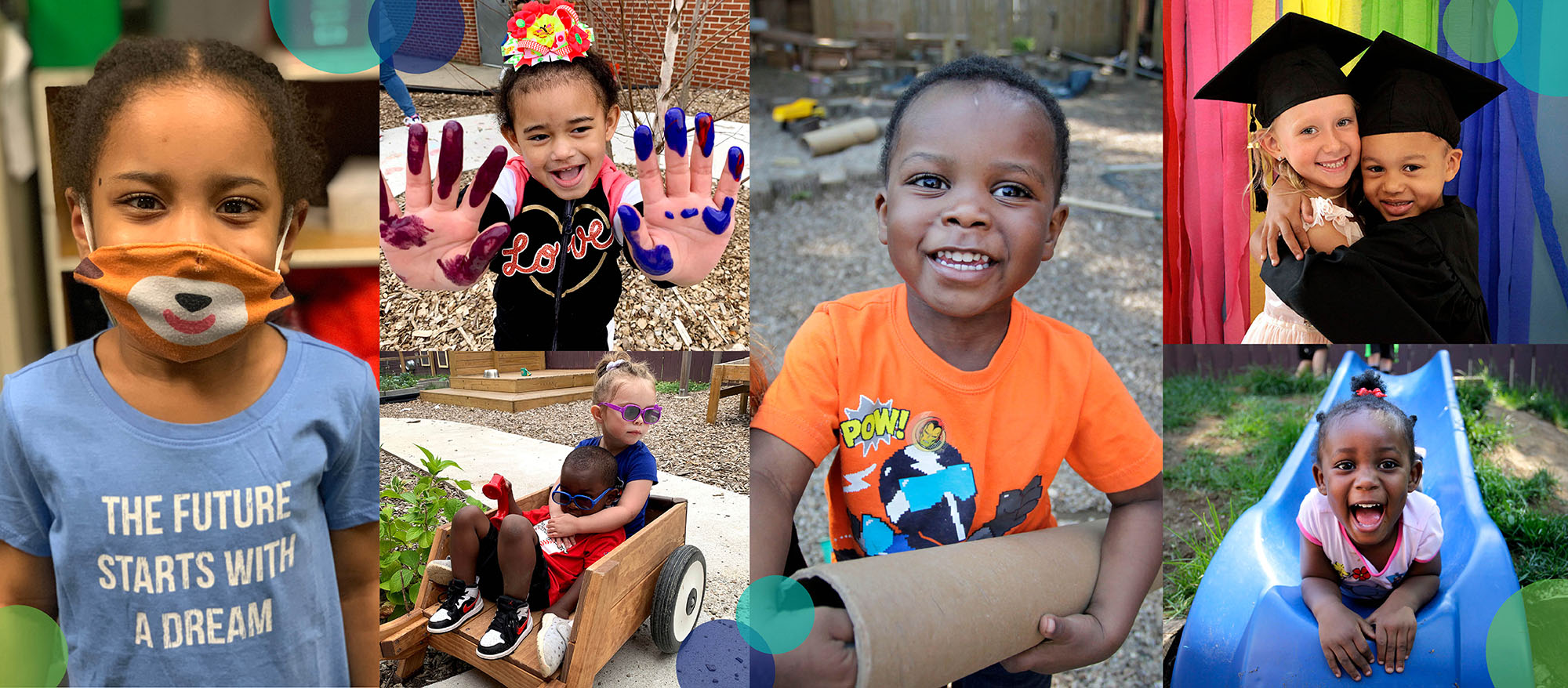
Head Start
In 2020 we partnered with Greater Louisville Head Start, allowing us to provide each child with added support to help ensure they are ready for kindergarten, as well as additional support for families through a Family Advocate.
If you would like to learn more about Head Start, please fill out this form for a member of the Head Start team to reach out to you.
Using The Reggio Emilia Approach to Learning
The Reggio Emilia curriculum was developed in 1960s Italy, creating an educational system that has been identified as one of the best early childhood programs in the world. It’s no surprise that this community-oriented method built to foster a lifelong love of learning has since spread throughout the world.
In Reggio, the child is viewed as strong, rich in potential, driven by the power of wanting to grow, and nurtured by adults. The Reggio vision of the child as a competent learner has produced a strong child-directed curriculum model, where children are encouraged to learn about themselves and the world around them through investigation and discovery.
The Reggio Approach has a strong belief that children learn through interactions with others in a friendly learning environment. The teacher acts as a researcher- always thinking about the children and about their own educational practice. Reggio educators speak of their evolving "experience" and see themselves as a provocation and reference point for learning.
Key features of Reggio Emilia's early childhood program include:
∙ Rich learning environments filled with authentic experiences and open-ended materials.
∙ Documentation is used as an authentic assessment and advocacy of children’s learning.
∙ Curriculum is not predetermined; it is flexible so that the curriculum follows the child’s lead.
∙ Teachers, parents, and the school community work together to create a shared experience around children’s learning.
Lesson plans are based on observing the children and their interests. It represents a deep respect for children as capable, intelligent and with an extraordinary inner drive to explore and discover. We use materials that are beautiful or interesting to look at and touch, allowing the child to hold, move, and explore. It is meant to ignite curiosity and learning.
100% of our preschool graduates leave us ready to learn in a Kindergarten classroom.
